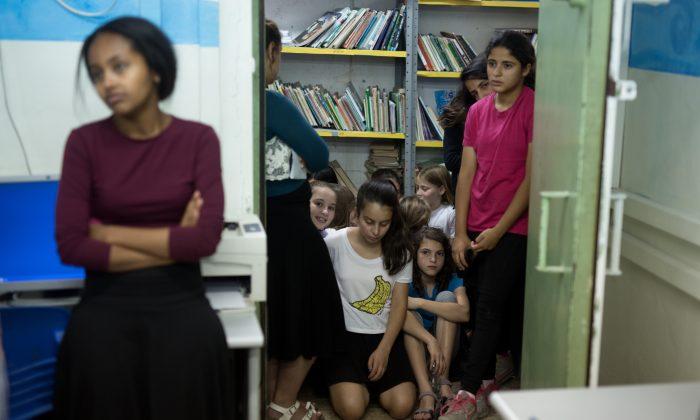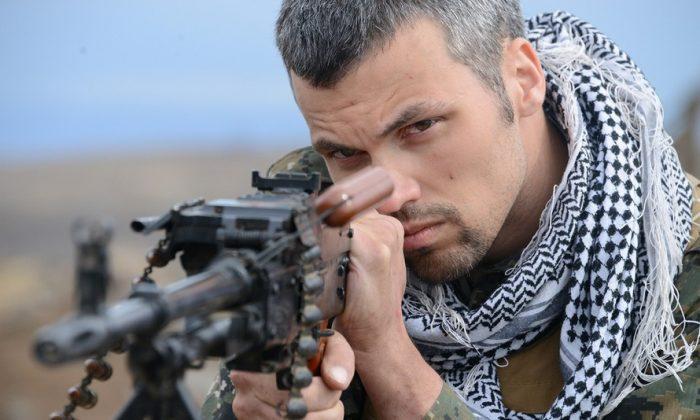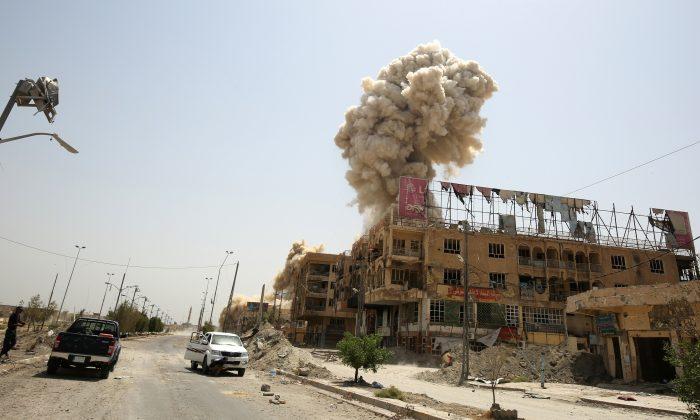NETIV HA'ASARA, Israel—In many ways, Jimmy Fenlon is a typical 15-year-old boy. He goes to school. He does his homework. His favorite subjects are science and chemistry. He tries to watch out for his 11-year-old sister, Jade.
But Jimmy is not typical in one significant aspect: He and his family live a mere 1,600 feet from the Israeli border with Gaza. That’s only about four and a half football field lengths. He has lived his entire life literally dodging rockets and mortars from Hamas just on the other side of the separation barrier.
In his lifetime, thousands of rockets have set off Israel’s red alert warning siren. Each time, Jimmy and the approximately 700 residents of his village, Netiv Ha'asara, have a mere five seconds to seek shelter. Even if they are fast asleep.
Like many 15-year-old boys, he is full of bravado.
“I feel OK because I am used to living that way,” said Jimmy, who has had a few close calls when shrapnel from rockets that exploded nearby hit the building he was in. “Some people who come from far away don’t feel safe, but I am used to it.”
He even casually mentions that there have been “a few big wars” in his lifetime. It’s never easy, even if nobody is hurt.
During the 2014 war with Gaza, he and his family had to evacuate their village several times for safety. More than 1,000 rockets were fired into Israel during the two-month war. He spent most of his summer vacation seeking cover in bomb shelters with his family.
Israel unilaterally withdrew from Gaza in 2005, which is now legally governed and controlled by the terrorist group Hamas. Since then, over 11,000 rockets have been fired into Israel.
During more typical times, they have had to run downstairs to their shelter. If an alarm wails at night, sometimes Jimmy wakes up his sister to bring her with him to get down to the shelter. All within five seconds.
When he is in school, though, Jimmy doesn’t have to run anywhere. That’s because the entire complex where he studies, Sha'ar HaNegev School, is a bomb shelter.

Israel is the only country in the world that employs the tactic of constructing schools for children from pre-K through college that double as bomb shelters. No matter where students are when an alarm sounds, as long as they are inside they are protected. There’s no running, no hiding, no counting down from five to one.
There are more than 200 bomb shelter schools in Israel built in the area around the east and north Gaza borders, known as the Gaza Division. More are underway. The heavily fortified buildings look like typical schools, but they are capable of withstanding (and have) heavy explosions. They cost about 30 percent more than their traditional counterparts.
The 50,000 residents in the Gaza Division’s 66 villages and towns all have bomb shelters in their homes, schools, and workplaces. Fully fortified schools have been mandated and funded by the government since 2007. Schools as far as 4 miles from the Gaza border are covered, according to the Israel Defense Force (IDF).
Lt. Col. Ghassan Tarif is head of the Engineering Branch in the Civil Protection Division of the IDF’s Home Front Command.
“They are building all the time,” said Tarif. He added that his engineers sign off on the protective aspects of the buildings, but they otherwise are built and funded by the Ministry of Education.
Tarif says there is no doubt that the structures are effective.
“We have had several hits on some of the schools, some of the kindergartens, we had nearby hits and several direct hits,” he said. “But nothing happened. The protection paid off.”
Tarif said that the fully protected buildings have withstood the impact of attacks.
“The building didn’t even feel the hit.” Yet he admits that the situation is far from ideal.

“No one wants to build like that,” said Lt. Col. Tarif. “No one wants their child to be in a place like that. But they also don’t have a threat like that.”
In the past 15 years alone, thousands of rockets and mortars have landed in Israel. Fired off by Hamas inside Gaza, some have reached as far as Tel Aviv and Jerusalem.
For those who live with the near-constant threat, though, the psychological impact can be significant. Especially for children.
Hila Fenlon, a 38-year-old farmer in Netiv Ha'asara and Jimmy’s mother, tells their story with less bravado than her son. Their family is in the midst of getting a new bomb shelter inside their home, closer to the bedrooms. A home shelter costs at least $20,000 to $30,000 and can be funded by the government. If every home in her village of 700 people upgraded their home shelter, it would cost the state at least $6 million.
That’s just homes in one village.
“To realize how much money was spent in the last few years as protection, it’s unbelievable,” said Fenlon. “It’s billions.”

Not far from her home, there is a bomb shelter pre-K school that has been under construction for two years and will open in the fall. It’s a typical length of time to construct such a building.
“It’s money that could have gone elsewhere, it could have gone to health care, it could have gone to education.”
But for the peace of mind that it brings to Fenlon’s and others’ children, no price is too high. After years of living under the threat of rockets, she describes her kids as being “afraid, mentally and psychologically disturbed.”
“It doesn’t matter where this one rocket lands, it impacts the entire community,” she said. “The main reason they try to hurt people is because they want to scare everyone else.”
Fenlon and others do get some tax breaks for living within range of Hamas. She can’t speak for others, but as a mother, Fenlon volunteers that she stays for the most seemingly dissonant reason: idealism.
She believes that on the other side of the border there are families much like hers that are also being terrorized and want peace.
“The people who are making this situation so difficult is Hamas,” she said. “I have hope. What else can I have?”





Friends Read Free